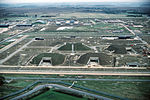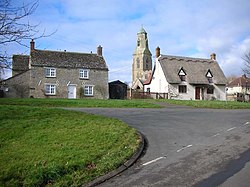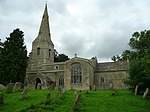Brington, Cambridgeshire
Former civil parishes in CambridgeshireHuntingdonshireUse British English from July 2016Villages in Cambridgeshire

Brington is a village and former civil parish, now in the parish of Brington and Molesworth, in Cambridgeshire, England. Brington lies approximately 9 miles (14 km) north-west of Huntingdon. Brington is situated within Huntingdonshire which is a non-metropolitan district of Cambridgeshire as well as being a historic county of England. In 1931 the parish had a population of 75.The neighbouring village of Molesworth is 0.7 miles (1.1 km) from Brington. The parish of "Brington and Molesworth" covers an area of 2,842 acres (1,150 hectares). Just to the north of Brington and within the civil parish is RAF Molesworth.
Excerpt from the Wikipedia article Brington, Cambridgeshire (License: CC BY-SA 3.0, Authors, Images).Brington, Cambridgeshire
High Street, Huntingdonshire Brington and Molesworth
Geographical coordinates (GPS) Address Nearby Places Show on map
Geographical coordinates (GPS)
| Latitude | Longitude |
|---|---|
| N 52.3697 ° | E -0.4081 ° |
Address
High Street
High Street
PE28 5AF Huntingdonshire, Brington and Molesworth
England, United Kingdom
Open on Google Maps








